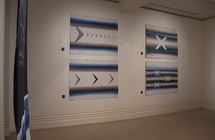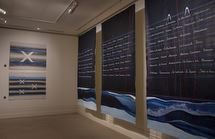
Ngai Tahu, Kati Mamoe, Ngati Kahungunu & Celtic decent ~
arts facilitator, community arts writer, art maker.
ART WORKSHOP
I am a self taught art maker. I started drawing when I was nine and went to an art school for kids set up by art educator, Gordon Tovey at King Edward Technical College in Dunedin (1956). Art making continued informally into adult life alongside songwriting, recording and live performance.
In the time of the Settlement of Ngai Tahu with the Crown, the arts were seen as way to move the tribe forward and away from grievance. I facilitated events featuring the work and thinking of Ngai Tahu artists across performing, visual and language arts disciplines & after four dynamic years, change was on my horizon. I was interested in the application of the arts as a tool to build and strengthen skill amongst people groups and communities where there was less opportunity for creative development.
Between 2003 and 2009 I trialled arts programmes as a tool amongst prisoners in Canterbury Prisons. The idea was to use the arts as a way to think about vision and goals for their future and the challenges that stopped progress of those goals. I made art alongside men, women and youth, and took small collections of work to public audiences outside the wire. There were a number of smaller and some large scale works and events developed over a period of 6 years including the Ruia Prison Arts Fund Raising exhibition (see Prison Art pages).
I received an Arts Access Aotearoa National Award for Arts Services to Prisoners in 2007. On the back of that I joined two other writers to develop a National Prison Art Strategy for Arts Access Aotearoa and the Department of Corrections Wellington (2008-2012). That work was commissioned in the global economic downturn of 2008 - 2009, the new John Key government and a complex restructuring of government departments including NZ prisons. This meant the strategy would be developed against a background of deconstruction.
In this period I met with The Learning Connexion who were delivering NZQA programmes to prisoner populations across New Zealand. I was offered a series of scholarships between 2010 and 2015 that would familiarise me with their entire curriculum, activate a formal arts practice and introduce me to an understanding of materiality; the use of art making materials that would built the narrative of work. (See Arts Workshop).
EXHIBITION: KORERO KOE; KORERO AU (You Speak, I speak)
21 January 2014FORRESTER GALLERY, THAMES STREET
OAMARU NORTH OTAGO
20 SEPTEMBER - 16 NOVEMBER 2014
A number of ideas influenced these works; the death of my Ngai Tahu / Kati Mamoe father and the notes of his great-grandfather Joseph Pita Tipa - (1896) about the waka Arai Te Uru. The names of its 138 'survivors' were - for the sake of remembering them, those given to rocks, outcrops, hills, ranges, mountains, streams, rivers and reefs between Kaikoura and Kaitangata. Another influence was the celestial navigational pattern, 'Te Ka o Makali'i (The Canoe-Bailer of Matariki) that would guide Maori and Polynesian voyagers across Te Moana-nui-a-Kiwa (The South Pacific Ocean) over a 400 year period. Of interest also are the marks of whakairo (carving) and raranga (weaving), communicating ideas of time, location and direction.
Some researchers believe the waka Arai Te Uru beached at Matakaea (Shag Point), North Otago about 800 years ago. Others say it existed only in the dimension of the spirit. Preparing this work for exhibition touched unexpectedly into the frequency of testimony - the resonance of a truth told again; about a people, a place and a time, lives with each telling.
With thanks to:
- The International Learning Connexion (TLC) Wellington NZ
- The Polynesian Voyaging Society, Hawaii
- Te Ara - The Encyclopedia of New Zealand, Wellington
- The Ngai Tahu Fund
- The Hocken Library - University of Otago
- Te Runanga o Moeraki
- The Forrester Gallery - Oamaru
- The Aigantighe Gallery, Timaru






















